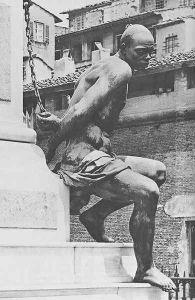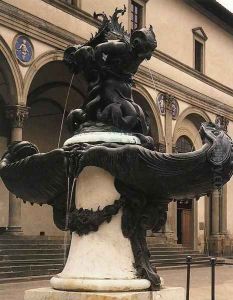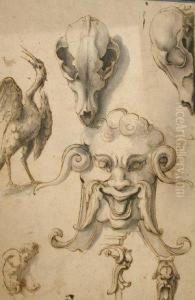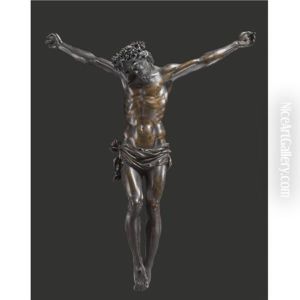Pietro Tacca Paintings
Pietro Tacca was an Italian sculptor who was born in Carrara, Tuscany, in 1577. He began his artistic career as an apprentice to the prominent sculptor Giambologna (Jean Boulogne), who was the court sculptor to the Medici family in Florence. Tacca worked closely with Giambologna, and after the latter's death in 1608, Tacca succeeded him as the court sculptor for the Medici. During this time, he became one of the most important sculptors in Italy, continuing the Mannerist style that was characteristic of the late Renaissance period.
Tacca's work is noted for its dynamic forms, intricate details, and expressive figures. He created numerous bronze statues and sculptures, many of which were commissioned by the Medici to decorate public spaces in Florence and other parts of Italy. One of his most famous works is the Quattro Mori (Four Moors), completed in 1626, which is a monument to Ferdinando I de' Medici, Grand Duke of Tuscany, located in Livorno. This work exemplifies his ability to convey movement and emotion in bronze, a medium that is notoriously difficult to work with.
Apart from public monuments, Tacca also worked on smaller-scale bronzes, such as busts and statuettes, which were highly prized by collectors during his time. He was also involved in the design and creation of fountains, one of the most notable being the Fontana del Tacca in Florence, which shows his skill in creating complex compositions that combine figures, water, and architecture.
Tacca's influence extended beyond Italy, as his works were collected and studied by artists across Europe. His style contributed to the development of Baroque sculpture, and his technical innovations in casting bronze helped pave the way for future generations of sculptors. Pietro Tacca died in Florence in 1640, leaving behind a legacy of artistic achievements that continued to inspire and influence the world of art long after his passing.



